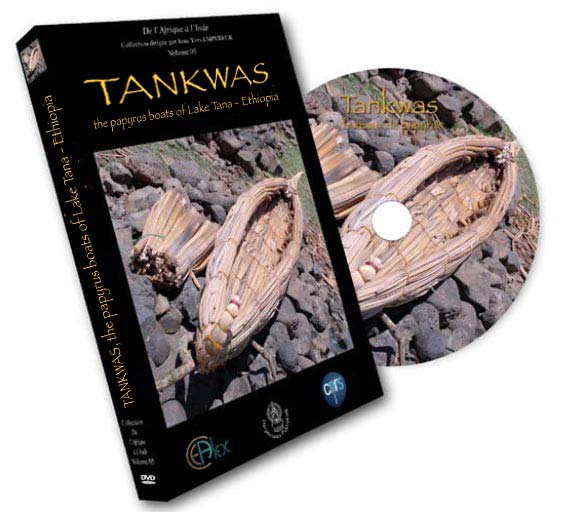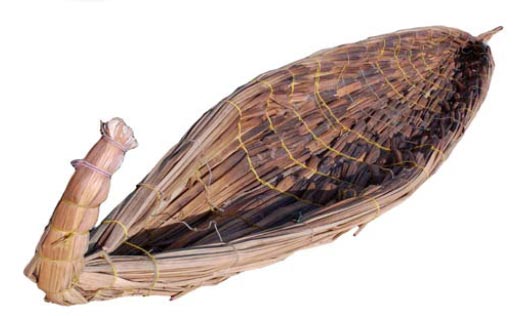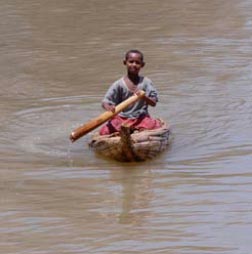




Papyrellas, or papyrus boats, are often
represented on the terracottas, paintings and mosaics of ancient Egypt The papyrus
plant, however, disappeared from the Egyptian countryside centuries ago, and
one must travel to Ethiopia to see such craft, locally known as tankwas. The
papyrus reed grows on the banks of Lake Tana, a lake that lies at 1850 metres
above sea level and through which the Blue Nile flows, by more than 4000 km far from
the river’s mouth. The local inhabitants use the long stems of this plant to build
their boats. Bundles of dried papyrus, laid end to end with a slight overlap, are
lashed to an untrimmed pole of eucalyptus wood that acts as a sort of keel. The
boat has a short life span of some three months and costs the equivalent of 3
euros. Its length depends on the end use : from 1 metre for those built for
children, up to 12 metres for the largest that are used to transport cargoes of wood or as
ferries carrying a dozen passengers from one bank of the Nile to the other.
Hundreds of these tankwas crisscross Lake Tana, as they have for millennia, representing
an essential part of commercial exchange and reflecting a sustainable and
respectful exploitation of the local ecology.
a film by Jean-Yves EMPEREUR
|
 |
CEAlex 13’ AI04EN